|
|
||||
|
They’re not much use without a lot of cabling. | Image by Norbert Pietsch from Pixabay Thanks to Oldbrew at Tallblokes Talkshop Who knew high voltage cables running for kilometers in a deep electrolytic moving body of water would be expensive?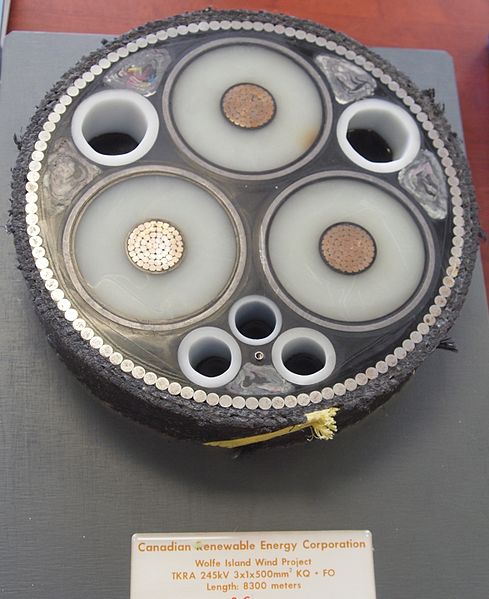 The 245kV Wolfe Island Cable | Photo by Z22 Despite offshore windfarms dealing in a kind of mechanical hell of high speed salt water spray, big waves and volatile wind conditions, surprisingly 85% of the insurance claims are because the underwater cables are failing.* If the subsea cables can’t be insured, it’s another unexpected cost threatening the economics of offshore wind. The underwater cables needed for offshore wind are apparently so costly to repair, and the losses from lack of generation so steep, they are in danger of becoming uninsurable. Subsea cable failures pose global threat to offshore windEnergy News Live The race to harness offshore wind energy has hit a significant roadblock, with the reliability of subsea cables emerging as a critical concern. Global Underwater Hub (GUH) has raised alarm bells about the escalating issue of subsea cable failures. These setbacks not only disrupt power transmission but also incur hefty costs. Imagine if an entire coal plant was connected to the grid through one long cable buried under the ocean and when the cable failed it took months to find and repair — during which time the plant could not earn a cent… Subsea cable failure could derail global offshore wind projectsWorld Oil GUH chief executive, Neil Gordon, said, “It’s estimated that around 85% of the total value of offshore wind insurance claims relate to subsea cables. Insurers are losing money underwriting cables with the average settlement claim in the region of £9 million. Brokers have warned that the high number of cable claims is affecting capacity and coverage and the cost of repairs typically runs into millions, with warranties rarely covering the high cost of business interruption. “If these critical components become uninsurable, offshore wind projects around the world will be derailed, making global 2050 net zero targets completely unachievable.” According to one developer, the cost of insuring a 1.2GW offshore wind farm over its lifetime is in the region of £350 million and insurance brokers estimate that the costs of floating offshore wind will be 30% higher than fixed bottom ones. Global Power Marine fixes export cables and quotes one happy customer talking about needing “only” 32 days instead of 67 days to repair the cable. But all the while, part or all of the wind plant isn’t earning any income, and so much of any repair depends on getting good weather so a ship can hover and work uninterrupted while the cable is “dangling” and exposed. Gulski et al estimate the duration of failure can be 1 to 3 or even up to 9 months: “Last 20 years of experience shows that the power cables are the largest contributor to the failures of power supply from the offshore plants. “ For those who want the details on the challenges of engineering Gulski et al detail some of the problems with subsea cables like the need for armour that isn’t magnetic, sections that are 30-50 kilometers long to avoid “joints” underwater, and why most cables on the sea floor are called “wet structures” which allow water in (at least to the outer layers). Wind energy might be free, but collecting it costs the Earth. Late Update — Australia desperately needs to learn these lessonsPrompted by comments from David Maddison and Ross below: There are no offshore wind plants in Australia but we are rushing to build them, so the tales of woe from the UK and US are especially relevant here now. The Basslink Cable from Tasmania to mainland Australian has broken not once, but three times here in the last seven years. First in 2016 for 5 or 6 months (I believe Australia didn’t even have the right repair ship, we used the Ile De Re which was based in Jakarta). Then the cable was out again in 2018 for two months. And in 2019 for another month due to a problem on land at the Victorian end. The Basslink repair in 2016 were delayed for weeks because of bad weather.
How could our BOM even predict 16 calm days on the Bass Strait…? _______________ *Admittedly, this percentage may be high because insurance companies don’t cover most of the other kinds of failures on wind “farms”, as we see with Siemens massive stock loss as they realized the true cost of maintenance.
Apologies, Thursday went someplace else. 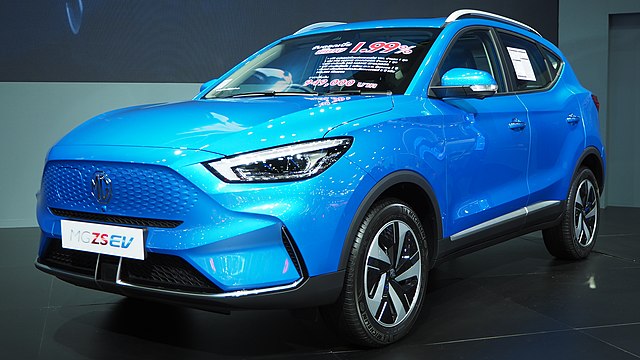 MG ZS EV X | | Photo by Chanokchon And you thought your last software crash was bad Brian Morrison ended up a prisoner in his own new MG electric car that wouldn’t stop. He could steer, but the brakes didn’t work, and he couldn’t turn it off. At one point he threw the car keys into the police van driving beside him, which had come to help, but even that didn’t stop the motor. This was not meant to be a self-driving car. Tragedy was averted this time because it was 10:30 at night, the road was empty and the police had time to stop it. But what if this fault occurred in normal traffic and the EV drove through a red light, or a pedestrian? By Rory Tingle at The Daily Mail: I was kidnapped by my runaway electric carTerrified motorist, 53, reveals his new £30,000 MG ZS EV ‘began driving itself’ after suffering ‘catastrophic malfunction’ – forcing him to dial 999 and crash it into a police van to get it to stop Brian Morrison, 53, claims he was heading home from work at around 10pm on Sunday when his new Chinese-made fully electric car began driving itself at 30mph. ‘I have mobility issues, so I couldn’t even jump out – I was completely trapped inside the car going at 30mph. ‘So eventually three police vehicles arrived and were driving in front of me and behind me. Mr Morrison said: ‘After trying to shut the car down, my entire dashboard lit up with faults, and then it all went away after a second and just had a big red car symbol that said “drive safely, stop driving immediately” or something. After the car was forcibly stopped it still launched itself forward if given the chance. The RAC mechanic plugged in his diagnostic machine and declared it had “pages of faults” and wasn’t game to turn the engine on. Before we thank our lucky stars that it worked out OK, we have to ask: how do we know this hasn’t happened before? It was the first time the emergency call centre had dealt with this issue, but if the EV had crashed and killed the driver before they could call, would the accident investigation squad even look for software bugs, or would they just say “they ran the red light”? David says: “Never trust a computer you can’t throw out the window”.* Coming soon to electric cars:  Photo: Marcin Wichary Imagine if we brought 100,000 two-ton vehicles from a foreign adversary… h/t Dennis *A quote from Steve Wozniak.
By Jo Nova Remember how we predicted insurance costs would rise when people realized that almost brand spanking new EV’s were being written off for scratches, because no one could test their battery and be sure it would not ignite? And then there was the news that after an accident, electric cars need to social distance, taking up as much as 50 times as much parking space, in case they blow other cars up? Well, insurance companies have realized this too. One underwriter has paused offering EV’s insurance entirely, while other companies are ramping up the rates by 60 – 900%. What a shock: ‘The quotes were £5,000 or more’: electric vehicle owners face soaring insurance costsZoe Wood, The Guardian In the Facebook group, members share stories of horror renewal quotes, with increases ranging from 60% (up to £1,100) to a staggering 940% (a jump from £447 to £4,661, according to a screengrab shared by one driver). “I spent weeks on every comparison site as well as trying individual insurers and specialist brokers, but either they wouldn’t cover the car or the quotes were £5,000 or more,” says David, whose only change in circumstance was three points on a licence. Privilege, Vitality, Axa and the specialist broker Adrian Flux were among the brands he found were “unable to insure him at this time” before he nailed down a policy with Direct Line, albeit at a price. Analysts say claims costs are 25% higher for electric cars, and that they also take about 14% longer to repair than a diesel or petrol equivalent. One former BBC reporter Alex Gerlis bought an EV, insured it with John Lewis, only to find after a year John Lewis said it had stopped insuring EV’s altogether. Gerlis thought this “flew in the face” of the company saying it wanted to fight climate change and complained. This may have been the first time he realized that not everyone who “wants to fight climate change” is happy to lose their money on it. If you own an EV and it is insured, you might be lucky if someone were to run into it in the car park. h/t NetZeroWatch
 Image by Darwin Laganzon from Pixabay Three labs confirm fragments of DNA from manufacturing are left in the mRNA vaccinesWe injected 70% of the world’s population with a barely tested admixture that included random lengths of DNA. We don’t know for sure if that DNA has been inserted into our nuclear DNA, but we’re not really looking either. The government just says mRNA can’t change your DNA. But could contaminated mRNA which is packaged in lipid nanoparticles, with gene therapy vectors and enhancers do that? Maybe, but whatever you do, don’t run those tests, right? Are we changing germline genetics of the human race — getting into sperm or egg cells? We don’t know. These are just the games we play these days. We could easily have run those tests on sperm at least, before we approved anything in young fertile adults and children, but we didn’t. A Chinese scientist that did that once in a different experiment ended up in jail. Some researchers are quite concerned to put it mildly. The odds may be low, but the numbers are astronomical. After a few billion hands of poker everyone has a Royal Flush. In March, Kevin McKernan, a molecular biologist, found DNA contamination in Pfizer’s mRNA Covid vaccines and published this in here and here. As soon as Kevin McKernan put out his paper on the presence of small fragments of SV40, the Factcheckers arrived to flood the scene with strawmen — declaring there’s no SV40 virus in vaccines — which is true, but no one said there was. Now the presence of remnant DNA has been confirmed by two independent labs (Dr. Sin Lee and Philip Buckhaults) — so it wasn’t a freak finding or a mistake. It really is that bad. Indeed, Phillip Buckhaults set out to show the fears were overblown but instead, in astonishment, confirmed what McKernan found. “My plan was to examine the vaccine to debunk the fear of SV40 being in the vaccine. … I checked them first by a PCR assay that uses primers against the vector, and lo and behold, it fired very hot. A very, very high signal. … and son of the gun, Kevin McKernan was right, this plasmid is present in the vaccine. I proved that there is NOT SV40 full virus, but there is plasmid DNA. And that plasmid does have a little piece of SV40 in it. “ — Phillip Buckaults interview with Maryanne Demasi A plasmid is a circle of DNA that’s a regular lab tool. In this case it contains about 10% of the SV40 virus, a virus that contaminated some polio vaccines around 1960, and has been the subject of many studies since. We find it in cancer cells, but did it cause the cancers? Academic opinion is divided (see the papers here). But the part of SV40 that’s in the plasmid is a potent part that amplifies or promotes whatever code follows it. Indeed, SV40 is used in gene therapy research — it makes a good vector. It’s such a good gene therapy tool that the residual DNA contaminant ought to be classified under gene therapy regulations instead of vaccination rules, says McKernan. He points out that there is an ongoing lawsuit in Australia with the TGA about this very issue. The mRNA vaccines are an incredibly complex chemical product — easy to screw upCreating mRNA vaccines was a monumentally ambitious chemical task. It’s no wonder things went wrong. An mRNA molecule is a chain of four different small molecules that is 4,284 bases long, in an exact sequence in the correct order. Effectively, on a molecular scale, we must connect these 4,284 nucleic acid bases in a row, and then wrap them in a fat layer (called a lipid nanoparticle). McKernan estimates each vaccination dose contains 13 to 40 trillion copies of the mRNA. This is not like the complexity of chemistry, say, used in creating ammonia in the Haber Bosch process, but something leagues, astronomical magnitudes beyond that. It is only possible because a billion years of evolution has crafted nano-scale machines that do a lot of it for us. We are merely co-opting the tools of biology. Grinding out thousands of bases is something even bacteria can do, but cleaning it up, that’s much harder. To create all the copies of mRNA, and package it up, we use E.Coli — a bacterium — to be the molecular factory, then we have to strip out those factories, to disassemble them and all their “body parts” and remove them, without damaging the product, and in some batches we failed miserably. Once again, we all hope friends, families and readers here, of course, got the good batches. It was a lottery. The best interview covering this is with the Epoch Times: American Thought Leaders Interview I recommend watching it at the link, or reading the whole transcript there. (I don’t think it is paywalled, but if you can’t play it, Brenda suggests this Rumble video version. These are excerpts below: Kevin McKernan Talks COVID Vaccine DNA Contamination, the Monkey Virus SV40 Promoter, and What’s Actually in the Vaccines… many years ago there was a case where Dr. He in China did some genome edits on two babies. He made two CRISPR [clustered regularly interspersed short palindromic repeats] babies. That guy went to jail. Fast-forward to today, we’re willing to take that risk on billions of people. Now granted, CRISPR is a lot more effective, and doing it on germline is obviously going to affect every cell in the kid’s body. We’re probably not going to get every cell in the kid’s body when we inject them with one of these vaccines. But if we hit a stem cell or if we hit a germline cell with a vaccine and we get an integration event, it’s effectively what that guy did, and it put him in jail. The ethical decay that’s occurred in the last five years in the biomedical community is absolutely astonishing. I can only attribute that to the vast amount of money that’s on the table for these vaccines.
What we do know is there is residual DNA in both shots, and this DNA is either right above the regulatory limit or tenfold higher. Our data has shown it to be tenfold higher than the FDA’s standards.
 Image by Gerd Altmann from Pixabay Why did we need such high doses? “… an RNA molecule for every single cell in your body.”The RNA is just supposed to make enough protein to teach some white blood cells, not to teach every single damn cell in your body: But what I think was perhaps a valid critique of their effort is that they never really knew how much you needed. Their dosage study looked at three doses. Why are we injecting 40 trillion of these things into people? Would you like factory DNA in your ovaries?We know from the biodistribution study that some of these LNPs are getting to the ovaries, so that’s a huge concern. If 1 percent of these LNPs get to the ovaries, there’s 40 billion in each shot, we’re getting down to 400 million that go to the ovaries. Now you’re starting to really concern yourself. If there’s only 300,000 oocytes in each female, and there are 400 million LNPs down there, these numbers are worrisome. What are we doing to the germline in the future generation? (These numbers didn’t quite tally. Some studies estimate each LNP ball has on average 5 mRNA’s. So 40 billion LNP’s won’t carry 40 Trillion mRNA’s, as McKernan stated above. Perhaps the transcription tool “misheard”, or a reader can explain — either way, the important point stands. Human eggs are precious things, a million or a billion accidents either way is awful). We don’t know where the vaccines went in body tissues:This would seem the most basic first step, but we didn’t even do it properly.
Mr. McKernan: There were a lot of things they told us were impossible, which turned out not to be true. I would like to see more biodistribution studies. The biodistribution studies were not run with the mRNA that’s being injected. They ran it with a mock mRNA known as a luciferase mRNA that doesn’t necessarily give you the best signal to detect this over long periods of time.
They also ran those biodistribution studies over very short time windows. Of course, now we’re seeing mRNA in people’s plasma 28 days later, and we’re seeing it in breast milk. We’re seeing the spike protein in monocytes four months later. The biodistribution studies really didn’t track this long enough to know where it goes and for how long.
A cocktail of contaminantsThe contaminants include not just a part of a monkey virus, but also antibiotic resistance, and also something called a 72 ACE pair enhancer which is apparently good for moving DNA into the nucleus (Oh no). Mr. Jekielek: Let’s talk about what we know concretely. Please explain why you might have this SV40 promoter and enhancer in there in the first place.
Mr. McKernan: It’s a common tool used in the biotech industry to drive very aggressive expression of a gene. In this case, Pfizer has it in front of a neomycin resistance gene, which drives resistance for neomycin. The reason they want it there is so that they can grow this plasmid in E.coli. E.coli doubles every 30 minutes, so you can grow E.coli overnight and get gobs of this DNA. You then have to purify it from E.coli to make RNA out of it.
Fragments of DNA — especially ones packaged the right way — could integrate into our own genetic code. They may do nothing or everything depending on where they “land” in our 3.2 billion base genome. They may cause cancer if they land inside a key gene that usually protects us against cancer. The concern is if this DNA integrates the genome, one portion of the SSV40 sequence is an SV40 promoter, a very strong promoter, which means it drives transcription wherever it lands in the genome. If this happens to drop itself in front of a proto-oncogene and drives a lot of expression off of a gene that’s known, if you hyper-express it and turn the cell cancerous, then we have a concern that DNA is in fact doing that. Normally it’s difficult for loose bits of DNA to get near the nucleus of our cells where our DNA is kelp. But if the DNA is packaged up and has the right equipment, it can get there: There are two concerns. There are promoters in this vaccine from SV40 and there’s an 72 ACE pair enhancer, which David Dean has shown is a very potent tool for moving DNA into the nucleus, and they’re right next to each other. If this DNA moves into the nucleus and it drags a promoter with it, and that integrates in front of a gene, it can disrupt gene regulation and potentially lead to the oncogenesis. Pfizer hid the SV40 component from the EMAThis is a really bad look: The really crushing thing here is Pfizer never disclosed the SV40 information to the EMA [European Medicines Agency]. They gave them a plasmid map of what the plasmid consisted of, with all of the features labeled, with the exception of the SV40 site. They did that because they know the SV40 region is a very controversial base in its history in the vaccine field. The polio vaccines were contaminated with the full virus, not just these little components, but the full virus. The full virus has over 5,000 bases. The components we have are about 466 bases of the virus, but they’re arguably the most functional aspects of the virus’s genome for replicating and for gene expression. The fact that they hid that this is in there from the EMA is a concern. We know from David Dean’s work that it’s used as a gene therapy tool, so it would clearly classify the residual DNA in the vaccines under the gene therapy regulations that we have in many jurisdictions. Fragments of DNA that integrate may do nothing or everything depending on where they “land” in our 3.2 billion base genome. They may cause cancer if they land inside a key gene that usually protects us against cancer. All our cells have multiple layers of protection against cancer, but this may wipe one of them out. Stop vaccines for children and adults of fertile ages until we knowIf the DNA of eggs and sperm is being changed — it may mean the death of that particular embryo, which may delay pregnancy but not preclude it. It could translate into falling fertility rates, or it may mean children born with a higher risk of disease or disability. We may be playing “shotgun” genetics with the next generation. Why aren’t our Ministers of Health looking? It would be easy to analyze sperm samples and answer this question. It’s a lot harder to test eggs. It’s the sort of test that could be done in weeks. Now that the DNA contamination is known, the question of culpability and informed consent gets so much more pointed. But for our regulatory agencies — the question remains — why didn’t test for this at the start of 2021? What kills much faster than cancer? — “endotoxins”McKernan admits that bacterial endotoxin contamination scares him more than the DNA — at least in an immediate sense. The remnant shells of the bacteria — the body parts of E.Coli — are called lipopolysaccaride, or LPS, and they are highly allergenic. We deal with small doses of this all the time, but in large doses, they can cause anaphylaxis — the potentially deadly overactivation of our immune systems. Just this contaminant alone may have caused sudden deaths within minutes of injection. There is some risk that if you don’t fully purify it from E.coli, you can leave behind what’s known as endotoxin or lipopolysaccharides, usually abbreviated as LPS. This is an additional risk that Pfizer took on. Moderna’s doing a very similar thing, although they don’t have SV40 in there. They are using E.coli to amplify their plasmid DNA, and it comes with some of this risk.
The good news is that if the endotoxins didn’t kill you, at least that risk is gone, unless you have a booster.
Cherry picking the tests to pass outdated regulationsThe European Medicines Agency (EMA) sets a safe ratio of RNA to DNA (well, they say it’s safe), but the pharmaceutical companies cherry picked the type of tests they used, so as to overestimate one and underestimate the others and “pass”. How much do any of them care about your health?
The EMA has a different standard that’s a ratio metric standard. When looking at RNA to DNA ratios, it’s even worse. The actual outcome is that there is more like a 17 to 80-fold gap from what is required in the regulations, as best we can tell.
I’ve only seen Pfizer’s documentation on this, but when they are measuring this and giving data to the regulators, they’re using two different tools to measure the RNA versus the DNA. That’s a mechanism for them to cook the books here. They shouldn’t do that. There’s tools like qPCR that can measure both DNA and RNA, but instead they’re measuring the RNA with fluorescence like a qubit or a fluorometer, and they’re measuring the DNA with qPCR. That inflates the amount of RNA they get and depresses the amount of DNA they get so that they can squeak through these regulatory requirements without anyone really understanding what’s going on.
Coding for the nerdsLastly, this, below, is just a part of the code for the plasmid DNA contaminants in the mRNA vaccine. Click to enlarge. The A, C, T and G stand for molecules called adenine, cytosine, thymine and guanine. Think of this as the C++, or Python of biology. Given the current state of play, perhaps it’s worth becoming a bit more familiar with molecular biology.  SV40 promoter code. Emerald Robinson It is double stranded — and in the alternate chain, which is effectively a back up “mirror” copy, we see C always pairs opposite G and T always sits opposite A. This is exactly the same as our DNA — same bases, same language. Our cellular machinery will potentially engage and read this code and produce the products — whatever they are. ————————————————— hat tip: John Connor II, Leo G, Konrad, Ian B, bella. Kevin McKernan’s blog is Anandamide Kevin McKernan1*, Anthony M. Kyriakopoulos2 and Peter A. McCullough3 (2023) Differences in Vaccine and SARS-CoV-2 Replication Derived mRNA: Implications for Cell Biology and Future Disease, Submitted for peer review. [DocX] (page 11) Bacteria image by Spaully
Only two weeks ago a team of archeologists discovered an arrow made from a shell had survived 3,300 years in the ice in Norway. As the glaciers melt, the team has found some 4,000 items of clothes and hunting gear. Things that must have been precious to someone at the time — like hand-made leather bridles and Viking age knives — peeling away layers of history. The director of the archeology team, Lars Holger Pilø, is very excited about finding a treasure trove of Early Bronze Age relics (as you would be). But he laments the cause — “the reason they are melting out is sad,” — he exclaims. The ice melt will lead to drastic changes in Norway’s landscape, he says, without seeming to notice he’s talking about warming the world back to what it was. Oh, the horror of a warmer climate that humans thrived in for thousands of years. Today, some youngsters glue themselves to a road at the thought of another half a degree temperature rise, but imagine having to kill dinner with a shell strapped to a stick? 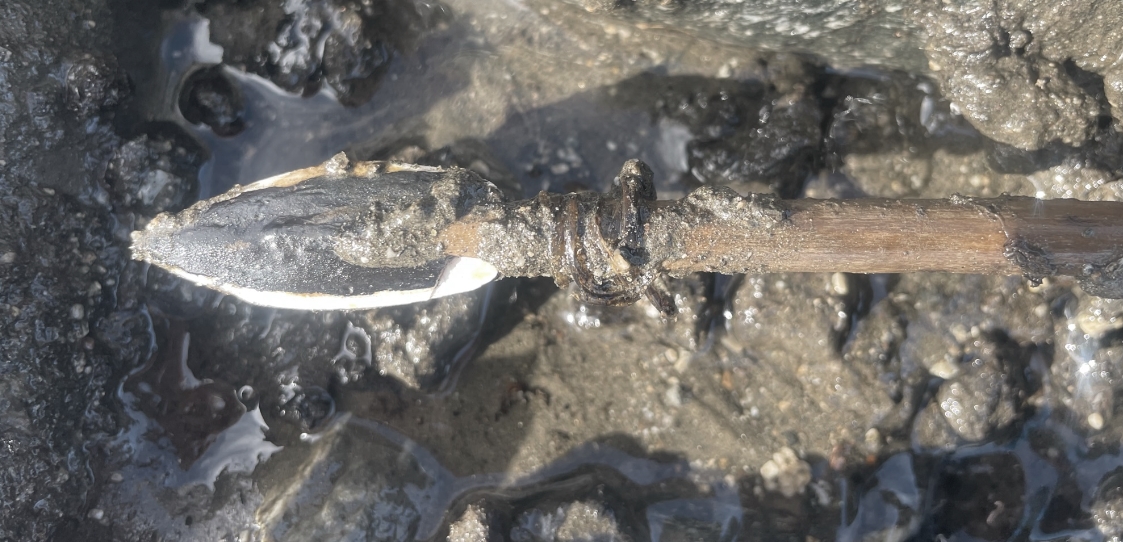 A 3,300 year old arrow made out of freshwater pearl mussel. | Secrets of the Ice. If only we could ask the last owner if they’d rather our current colder climate? Melting Glacial Ice in Norway Reveals Intact Bronze-Age ArrowMaya Pontone, HyperAllergic Archaeologists trekking through the Jotunheimen Mountains in Norway’s Innlandet County came across a remarkable find — an intact shell arrow dating back to the Early Bronze Age. Fastened with an arrowhead made of freshwater pearl mussel, the well-preserved hunting tool dates back 3,600 years and is one of eight shell arrows that have emerged from melting ice in Norway in recent years. “The glaciers and ice patches are retreating and releasing artifacts that have been frozen in time by the ice,” Lars Holger Pilø, co-director of the archaeology program, told Hyperallergic. It’s quaint the way they have to turn it into an ad for climate change, even though everything about this project screams “climate change is natural” As global warming transforms Norway’s mountainous landscape, Finstad, Pilø and their fellow glacier archaeologists are rushing to collect the exposed artifacts, which continue to get older as the ice continues to melt. There’s more photos at Secrets of the Ice. Archaeology is very cool, it’s just a shame when they have to talk about the climate religion. Remember, none of the models can really explain why the Holocene was warmer than today, because CO2 was lower. It’s called “The Holocene temperature conundrum”. Arrow heads shaped from shells by the sea, –Ruairi h/t NetZeroWatch
By Jo Nova WallStreetSilver has updated the great little pandemic musical on vaccine efficacy. Elon Musk retweeted it. So far 7.7 million people have seen it, 26,000 have commented and it keeps spreading.
My concern was more the outrageous demand that people *must* take the vaccine and multiple boosters to do anything at all. That was messed up. Until the Supreme Court invalidated Biden’s exec order, SpaceX and many other companies would have been forced to fire anyone who refused to get vaccinated! We would not have done so. I would rather go to prison than fire good people who didn’t want to be jabbed. As for myself, I got original Covid before the vaccine was out (mild cold symptoms) and had to get three vaccines for travel. The third shot almost sent me to hospital. How many other people out there have symptoms that are actually from the vaccine or Covid treatment, rather than Covid itself? As for those who didn’t take any vaccine, well @DjokerNole just won a record number of grand slams … It’s not like I don’t believe in vaccines – I do. However, the cure cannot be potentially worse than the disease. And public debate over efficacy should not be shut down. There is also great potential for curing many diseases using synthetic mRNA, so let’s not throw the baby out with the bath water. The music is ‘In The Hall of The Mountain King’, from the Peer Gynt Suite Op.46; No.1 by Edvard Grieg h/t another ian, Colin A, Matthew L, GlennfromOz Keep reading → By Jo Nova For some reason wind and solar power will not be powering a new EV battery factory in Kansas. Instead the sudden extra demand for electricity will be met by keeping an old coal-fired plant running. Environmentalists are not happy. Wait ’til they realize no one even knows if EV’s will reduce carbon dioxide at all. EV Battery Factory Will Require So Much Energy It Needs A Coal Plant To Power ItKevon Killough, Cowboy State Daily A $4 billion Panasonic electric vehicle battery factory in De Soto, Kansas, will help satisfy the Biden administration’s efforts to get everyone into an EV. It also will help extend the life of a coal-fired power plant. The Kansas City Star reports that the factory will require between 200 and 250 megawatts of electricity to operate. That’s roughly the amount of power needed for a small city. Naturally, to make something utterly pointless takes a lot of taxpayer money and Panasonic will receive $6.8 billion from the Inflation Reduction Act, which will, quite possibly, increase emissions and create inflation too. As Mark Mills said it takes 250 tons of material to make one EV. All that energy has to come from somewhere:To match the energy stored in one pound of oil requires 15 pounds of lithium battery, which in turn entails digging up about 7,000 pounds of rock and dirt to get the minerals needed—lithium, graphite, copper, nickel, aluminum, zinc, neodymium, manganese, and so on. Thus, fabricating a typical, single half-ton EV battery requires mining and processing about 250 tons of materials. It was all foreseeable. Europe, with more renewable energy, lost most factories for solar panels years ago, and is in the process of losing wind, batteries and EV’s. This week, Volkswagen cut EV production in Germany as demand “craters”. ht/ John Connor II and RobB
Image by Ritu Rawat
By Jo Nova It’s just another wake up call in the Green fairy fantasy landIt’s a nice idea to think we can store electricity in liquid fuels and effectively run our planes on wind or solar power, but the numbers are not your friend. The chief of Europe’s second largest airline presumably thought it was time to remind our planetary saviors that aviation really needs Avgas. There is no realistic option to decarbonize flights. German airline Lufthansa says it would consume half of Germany’s electricity if it were to switch to green fuelsBy Prarthana Prakash, Fortune …while Lufthansa has tried to do its bit to adopt sustainable practices, the company’s chief says that switching the airline to green fuels like e-kerosene could come at a big price—half of Germany’s electricity supply. “We would need around half of Germany’s electricity to create enough of the fuels,” Lufthansa’s Carsten Spohr said at an aviation conference Monday, Bloomberg reported. He added that while green fuels made using renewable energy sources would help Lufthansa decarbonize its fuel consumption, the likelihood of having enough electricity to produce such materials was low. Essentially, to decarbonize Lufthansa about 30 million people would have to live in the dark. And we’re only talking of decarbonizing the flights, not the manufacturing of planes, runways and airports. Carsten Spohr also pointed out that Lufthansa was “among the biggest buyers of sustainable aviation fuel (SAF)”, but there just wasn’t enough in existence, even if passengers were willing to pay for it. “If the Lufthansa Group were to use all the SAF currently available, it would only be able to fly for just under two weeks.” Only a few months ago, the experts announced that the lifespan of electric plane batteries was “only a few weeks” pouring more doom on the idea that planes can be “NetZero”. France announced that instead of short flights, people would have to catch the train (unless they owned a private jet, in which case it was fine). Avgas is God’s gift to the masses.
Turtle Castle image by SAIF 4 By Jo NovaRishi Sunak’s delay in the NetZero Quest was the crack in the Uniparty WallThanks to NetZeroWatch It threatens to ignite a climate election. It matters, because now, suddenly, one party can point out the absurdities and the costs. They can be an Opposition, and mock the sacred cows. That doesn’t mean Sunak will do that, but the fork in the road has opened, the world is watching — and his party is suddenly up four points. The Green funds cartel is “in shock” sayth Bloomberg, at the Sunak shift — so it must be pretty serious. Green investors are using the words “dismay” and “bewilderment”, which they almost never use. Green investment relies almost entirely on crowd psychology and government subsidies, so normally bad news is padded and fluffed so it doesn’t look so bad. We wouldn’t want to lose momentum would we? Boy are they losing momentum. Meanwhile Sweden has not only cut climate money a bit, it’s unshackled some taxes off fossil fuels as well, leaving the centre left apoplectic and threatening to move motions of no-confidence. It is unthinkable, apparently, but Sweden might even increase emissions. Germany has suspended draconian building efficiency standards and stepped back from their full gas boiler ban. They had wanted to ban all new “fossil” heaters from 2024, but after fierce protests, have instead brought in a much diluted and delayed version due to be adopted in 2028. President Emmanuel Macron must have been watching the German and British debacles. His new plan rules out a complete ban on gas boilers, and talks about protecting vulnerable people in rural areas, and even how the French love their cars. What’s more scary than climate change? — The rise of the far-rightThe quote of the day is from a German politician who sums up the major driver of these policy shifts. Earlier this month, German Finance Minister Christian Lindner told Politico that stricter energy efficiency rules for buildings could fuel the rise of the far-right, amid growing apathy across Europe over plans to reach net zero. So Climate Change might cause the sixth mass extinction of life on Earth, but nothing is more frightening than the possibility of the far-left losing power at elections.* Polls have leapt for the conservative government in the UK since Rishi Sunak slowed the NetZero trainThis is what all the Climate-believer politicians are afraid of. Deep down, they know the NetZero quest is not popular with the masses, even though they say it is all the time. If they thought climate policies were really winners with the workers, they wouldn’t be so afraid of their opponents catching the skeptical train would they? Instead, they are aghast when their opponents dare suggest other priorities might be higher than changing the weather. Nightmare for ‘unpopular’ Starmer as lead over Tories plummets in shock new pollExpress, UK Deltapoll polled people from the 22nd to 25th, and saw a four point swing from Labour to the Tories compared to their last poll 10 days ago. Labour are down three points, with Mr Sunak’s party rising five points. While Labour is still ahead of the Tories by 16 points, this is a significant swing in a short amount of time. The poll was of 1,507 adults from Great Britain… This is a very good sign. Financial types almost never speak unguarded, out loud, lest they scare the horses. This is panic: Green fund managers in ‘complete shock’ after Sunak’s Net Zero rollback
|
||||
|
Copyright © 2024 JoNova - All Rights Reserved |
||||

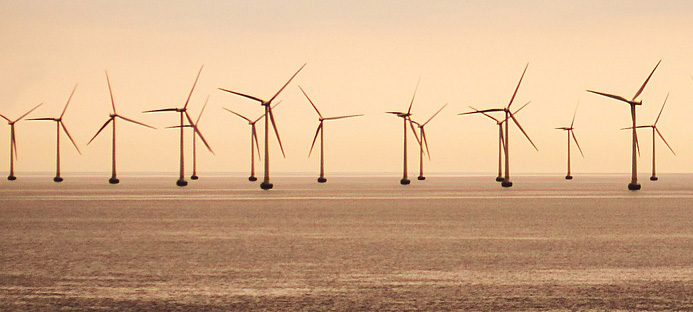


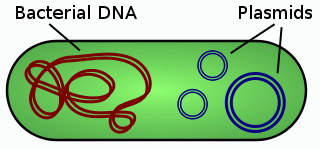
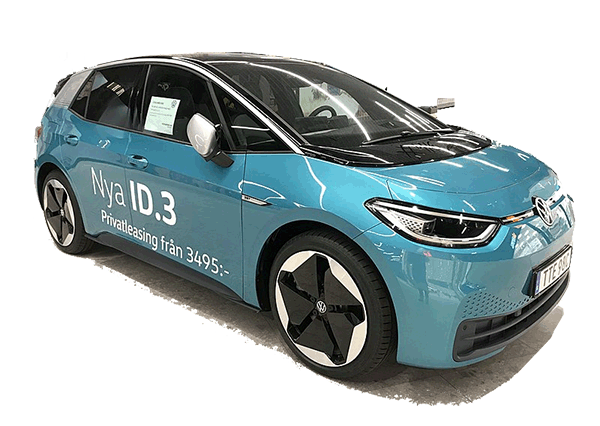













Recent Comments